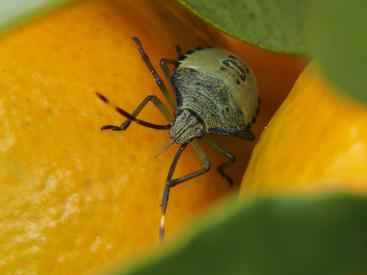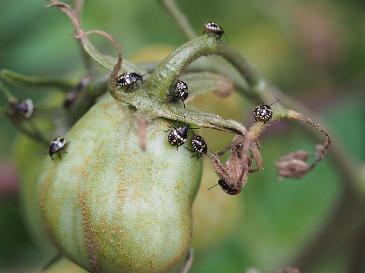Pests and Diseases
Finding that your new seedlings, so carefully planted out, have disappeared overnight thanks to the
resident army of slugs and snails is guaranteed to ruin your day.
Losing your beautiful crop of fruit to blackbirds is enough to make you weep!
And what about those unsightly spots on the zucchini leaves? Or the lumps on the lemon tree
branches?
There are things you can do to diagnose the problem and minimise the losses.
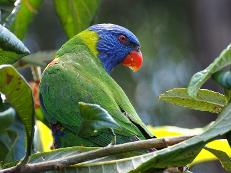
Pests
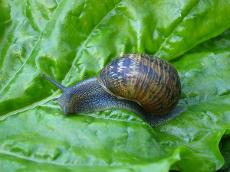
Snails and slugs are probably the most common problem. The most efficient means of control is
to get out in the evening, particularly after rain, with a torch, a disposable glove and a bucket.
Collect the snails and slugs then then kill them quickly by pouring a kettleful of boiling water over
them. Next morning bury them in the garden - they are very nutritious! Alternatively, use scissors:
a very efficient murder weapon for those small but destructive slugs that are too slimy to pick up.
You could also try copper tape around the edge of the garden bed or bowls of beer set into the soil
so the top lip of the bowl is level with the soil.
Blackbirds like to scratch around in fertile garden beds, although they don't usually bother when
the bed is densely mulched with straw. They will, however, enjoy your tomatoes if they find them,
as will lorikeets, Indian mynahs and parrots, and the only
really effective way to keep them away
is by netting the plants.
Possums love fruit, and may find your vegies. Again, netting is the best way to keep them safe.
Cabbage white butterflies lay their eggs on brassicas (broccoli, cabbage,kale etc). The green
caterpillars can make a mess of these
plants. 'Dipel' is a pesticide that is registered for organic
produce, and if sprayed every 2-3 weeks will control these nuisances.
Otherwise, cover your
brassicas in fine netting, or grow
them in the cool months when the butterflies are not
around.
You may find aphids or white fly or passionfruit leaf hoppers invading your garden at times
over summer. There are pesticides such as eco oil, pest oil and pyrethrum that can be used in an
organic garden, and a dilute solution of detergent will help
too.
Encourage predator insects by growing plenty of flowering plants, and letting some of your herbs
and vegetables flower. Lettuce, silverbeet,
parsley, dill, coriander, parsnip, oregano, thyme and
marjoram are
all popular with predator insect species. And you will be able to
collect seed for the
next crop.
Citrus Gall Wasps
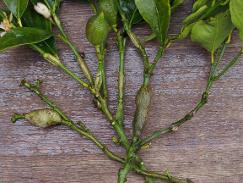
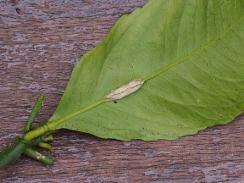
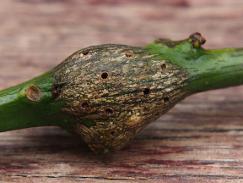
These tiny wasps lay their eggs into the bark of the new growth on citrus
trees. Lemons, limes, grapefruit and Japanese seedless mandarin are particularly susceptible.
The growing wasp larvae form swellings - galls - on the stems of the citrus trees. They hatch out
in August/September and will go on to produce new generations of larvae. Without the diligent
removal of the galls, trees can become heavily infested which will weaken them and reduce
fruiting.
Check each tree several times, in different light conditions: it's easy to miss the galls. Prune them
out; a severely infested tree may need to be cut back hard - it will regrow, but don't expect much
fruit for a couple of years.
Ensure the growing wasps within the galls are killed: submerge prunings in water for several
weeks; microwave or bake the galls. Shredding in the mulcher then composting in a hot heap
should do the trick too.
